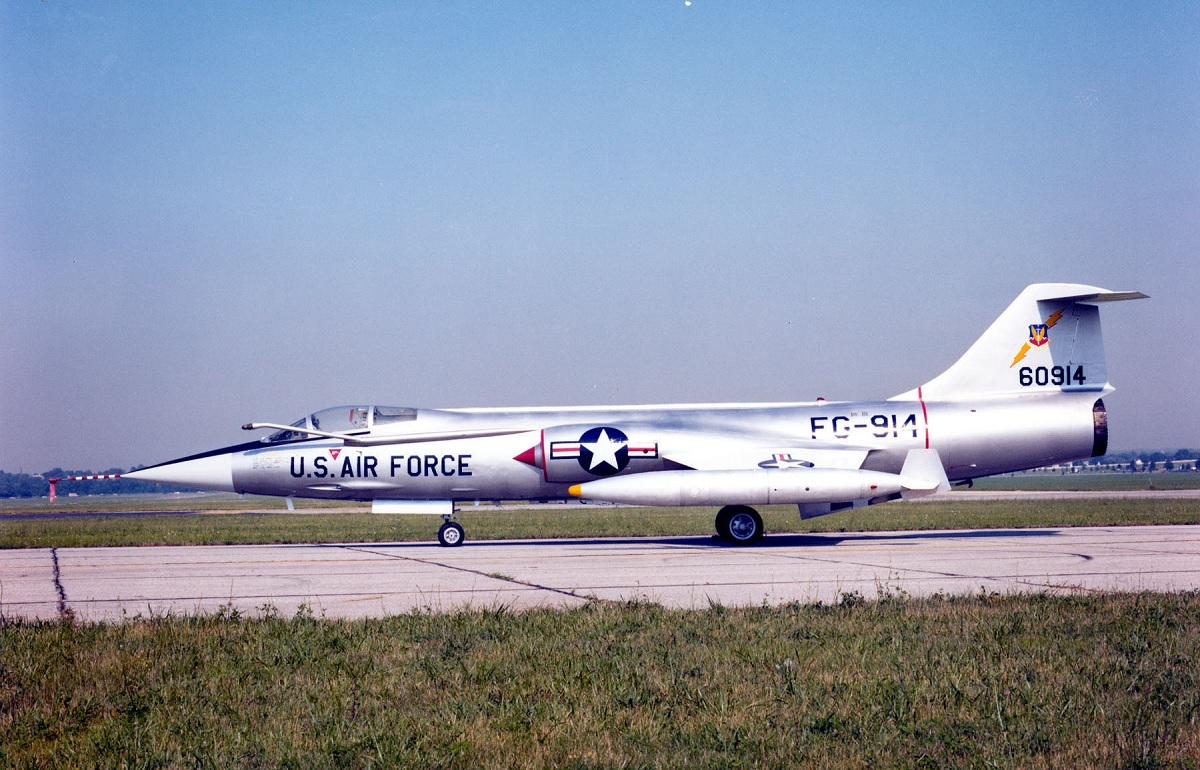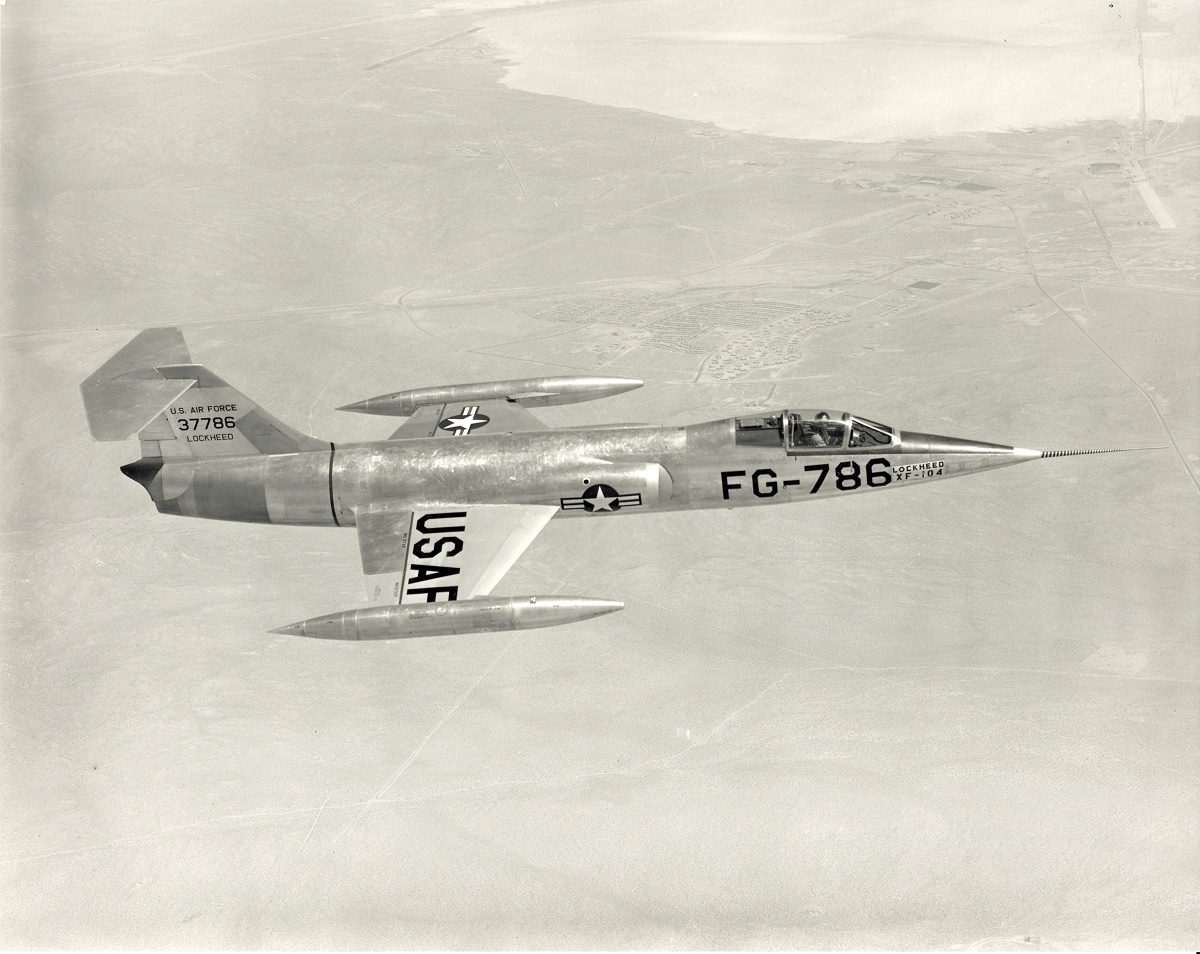When four F-104s were training for the type’s “introduction-into-service” demonstration in June 1962 and crashed in formation, killing all four pilots, it was a very terrible start for the Starfighter in Germany
Early in 1956, the first futuristic-looking F-104 Starfighter took to the air, and with its long circular fuselage, pointed nose, and small, thin wings, it appeared to be the world’s best fighter.
The Lockheed F-104 was created by C. L. “Kelly” Johnson and his “Skunk Works,” who also created some iconic combat planes like the U-2 and the SR-71 reconnaissance aircraft. The company dubbed it the “missile with a man in it,” but the Luftwaffe and Marineflieger (German Navy) referred to it as the “widowmaker.”
The F-104’s svelte appearance concealed a host of defects, as Dr. Marshall Michel, 52nd Fighter Wing Historian, explains in his article F-104: Germany’s “Widow Maker.”
For example, the landing gear and fuel had to be stored in the fuselage because the wings’ capacity was so limited. To achieve the Starfighter’s exceptional acceleration, rate of climb, and top speed, however, narrow wings were required. In contrast, the F-104’s narrow wings gave it poor sustained turn performance and a relatively short range because it couldn’t carry fuel.
Additionally, the aircraft lacked a functional radar and had a limited loadout of a gun and heat-seeking missiles, making it a daytime and clear weather fighter only. It was quietly pushed to the side once it became clear that it was not truly what the U.S. Air Force (USAF) intended.

However, at the same time, some NATO air forces decided to replace their outdated first-generation fighters with the F-104 as part of what was dubbed the “Deal of the Century.” More than 900 of these aircraft, the majority of which were delivered to the Luftwaffe and Marineflieger air forces.
The Luftwaffe and Marineflieger operated 11 F-104 wings at their busiest in the middle of the 1970s. The variation that was given to the Germans was code-named F-104G (with the G standing for Germany) and was an all-weather, ground-attack variant that was 2,000 pounds heavier than the original F-104 with the same engine. Its weight was increased by the requirement to transport four external fuel tanks for the majority of missions.
When four F-104s practiced for the type’s “introduction-into-service” demonstration in June 1962 and crashed in formation, killing all four pilots, it was a very disastrous start for the Starfighter.
Because of its superior training facilities and proximity to Phoenix, Arizona, Luke Air Force Base (AFB) was selected by Germany to prepare its future F-104 pilots. Luke Air Force Base (AFB) boasts about 300 days of sunshine annually. However, issues surfaced right away when the pilots returned to the severe German weather. There were two problems.

First off, the F-104 had to fly at very high speeds for approach and landing – far higher than earlier aircraft – and moved extremely quickly, especially for a novice pilot operating in extremely bad weather.
Second, because the Luftwaffe Starfighters had to carry out low-level, high-speed attack missions, they were exceptionally sensitive to control input and unforgiving of pilot error in these operations.
There were a terrible lot of accidents as a result. By the middle of 1966, 61 German F-104s had actually crashed, killing 35 pilots.
When he claimed that the Starfighter acquisition was prompted by politics, Gen. Wernher Panitzki, the then-Commander of the Luftwaffe, was compelled to quit. Lt. Gen. Johannes Steinhoff, a veteran of the Luftwaffe during World War II, succeeded him. According to Michel, Steinhoff promptly grounded the F-104Gs, at least partially to put in a new ejection seat.
Even though the German Starfighter purchase records had been deleted in 1962 by the Ministry of Defence, it was later discovered that Lockheed had actually bought favor with government officials in Germany and other nations in order to sell the F-104.
Nevertheless, after numerous improvements, the crashes persisted. Between 1968 and 1972, every year saw between 15 and 20 German 104s crash, and until it was replaced, the number each year was around 10. In total, 292 of the 916 Starfighters were lost, and 115 pilots lost their lives.

Photo by Luftwaffe and U.S. Air Force

